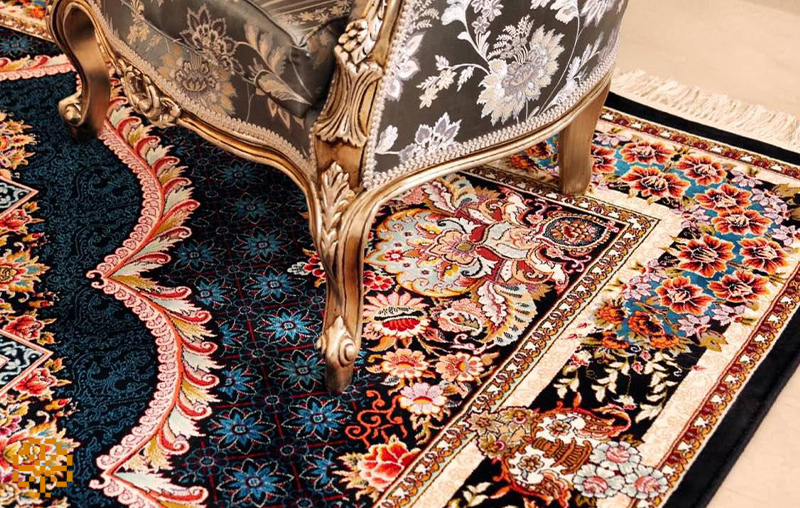Persian carpets, renowned worldwide for their intricate designs, vibrant colors, and unmatched craftsmanship, symbolize luxury and cultural heritage for centuries. Originating from Persia, modern-day Iran, these carpets have transcended their utilitarian purpose to become coveted works of art. With a history of over 2,500 years, Persian carpets are a testament to the region’s rich cultural, artistic, and historical traditions. This article delves into the fascinating world of Persian carpets, exploring the variety, the regions they hail from, and the unique characteristics that distinguish each type.
Historical Background of Persian Carpets
The art of carpet weaving in Persia dates back to ancient times, with evidence suggesting that the practice existed as early as 500 BCE. The Pazyryk Carpet, discovered in a Scythian burial mound in Siberia, is believed to be one of the oldest surviving examples of a knotted carpet, dating back to the 5th century BCE. With its sophisticated design and craftsmanship, this carpet provides a glimpse into the ancient tradition of carpet weaving in Persia.
Over the centuries, Persian carpets have evolved, influenced by the various dynasties that ruled the region, including the Achaemenid, Sassanid, Safavid, and Qajar dynasties. Each period contributed to developing distinct styles, motifs, and techniques, resulting in the rich diversity of Persian carpets we see today.
The Diversity of Persian Carpets: An Overview
Persian carpets are classified based on their region of origin, with each area producing carpets that reflect the local culture, environment, and traditions. The diversity in Persian rugs can be attributed to the varying climates, geography, and cultural influences across the country. The most famous Persian carpets include the Tabriz, Isfahan, Kashan, Kerman, Heriz, and Qashqai, each with unique characteristics and design elements.
Tabriz Carpets
Tabriz, one of the oldest cities in Iran and a historical center of carpet weaving, is renowned for producing some of the finest Persian carpets. These carpets are known for their high quality, detailed designs, and durable construction. They often feature intricate floral patterns, medallion designs, and various colors, including reds, blues, and creams.
The craftsmanship of Tabriz weavers is evident in the tight weave and the design’s precision. The use of high-quality wool, silk, or a combination of both materials contributes to these carpets’ luxurious feel and longevity. Collectors highly seek after Tabriz carpets, which are often considered the epitome of Persian carpet weaving.
Isfahan, a city known for its architectural splendor and rich cultural heritage, is another primary center for Persian carpet production. Isfahan carpets are characterized by intricate designs, often featuring symmetrical patterns, arabesques, and floral motifs. These carpets typically use a palette of soft colors, including pastel blues, greens, and beiges, which reflect the elegance and sophistication of Isfahan’s cultural milieu.
The quality of Isfahan carpets is exceptional, with a high knot density that allows for detailed and precise designs. Silk is often used alongside wool to add a sheen and softness to the carpets. Isfahan carpets are known for their balanced composition and harmonious color schemes, making them highly prized by collectors and interior designers.
Kashan Carpets
Kashan, a city with a long history of carpet weaving, is famous for its finely woven carpets that often feature floral motifs, medallions, and arabesques. Kashan carpets are typically made from high-quality wool and are known for their durability and softness. The colors used in Kashan carpets are often vibrant, with deep reds, blues, and ivory being standard.
Kashan carpet designs are often inspired by Persian gardens and nature, with motifs such as roses, vines, and birds frequently appearing in the patterns. The attention to detail and fine craftsmanship of Kashan weavers make these carpets popular for those seeking a blend of beauty and durability.
Kerman Carpets
Kerman, located in southeastern Iran, is known for producing some of the most beautiful and intricately designed Persian carpets. Kerman carpets are characterized by their large central medallions, floral motifs, and detailed borders. The designs often feature a combination of bright and pastel colors, creating a striking contrast that is visually appealing.
The quality of Kerman carpets is exceptional, with a high knot density that allows for intricate and detailed designs. The use of high-quality wool and natural dyes contributes to these carpets’ rich colors and luxurious feel. Kerman carpets are known for their artistic beauty and are often considered one of the finest examples of Persian carpet weaving.
Heriz Carpets
Heriz carpets, originating from the Heriz region in northwestern Iran, are known for their bold and geometric designs. Heriz carpets feature large, angular motifs and medallions, unlike other Persian carpets’ floral and intricate patterns. These carpets often use a palette of earthy colors, including deep reds, blues, and browns, which reflect the region’s rugged landscape.
The construction of Heriz carpets is robust, with a thicker weave that makes them durable and long-lasting. Their geometric designs make them a popular choice for modern and contemporary interiors, where their bold patterns can create a striking focal point.
Qashqai Carpets
The Qashqai are a nomadic tribe from southwestern Iran, known for their vibrant and colorful carpets. Qashqai carpets are unique in that they are handwoven by the tribe’s women, often using wool from their sheep and natural dyes derived from local plants. The designs of Qashqai carpets are usually inspired by the natural world, with motifs such as animals, birds, and geometric shapes.
Qashqai carpets are known for their bold colors, including reds, oranges, and blues, achieved through natural dyes. The weavers often incorporate symbolic motifs into the designs, which may represent aspects of their nomadic lifestyle or spiritual beliefs. The rustic charm and authenticity of Qashqai carpets make them popular for those seeking a connection to the traditional and tribal roots of Persian carpet weaving.
Baluchi Carpets
The Baluch nomadic tribes in the eastern regions of Iran and parts of Afghanistan and Pakistan produce Baluchi carpets. They are smaller in size than other Persian carpets, making them ideal for use as prayer rugs or decorative pieces. Baluchi carpets are known for their deep, rich colors, often featuring dark reds, blues, and browns.
Baluchi carpets’ designs are geometric and often incorporate motifs such as diamonds, stars, and stylized animals. They are constructed durablely, with a tight weave that ensures longevity. Baluchi carpets are prized for their authenticity and connection to the nomadic traditions of the Baluch people.
The Craftsmanship Behind Persian Carpets
Creating a Persian carpet is a labor-intensive process that requires exceptional skill and patience. The process begins with selecting high-quality materials, such as wool, silk, or cotton, and then spun into threads. The weavers, often working on looms, meticulously knot each thread to create the intricate designs that define Persian carpets.
The dyeing process is another critical aspect of Persian carpet making. Traditional Persian carpets use natural dyes derived from plants, insects, and minerals, giving the carpets vibrant and long-lasting colors. The dyeing process requires expertise to achieve the desired shades and to ensure that the colors do not fade over time.
Once the weaving is complete, the carpet is sheared to create an even pile, and the final product is washed to remove any impurities. The result is a work of art that reflects the skill, creativity, and cultural heritage of the weavers.
The Cultural Significance of Persian Carpets
Persian carpets are more than decorative items; they reflect Iran’s cultural and artistic heritage. Throughout history, Persian carpets have been used in various cultural and religious contexts, including prayer rugs, ceremonial gifts, and symbols of wealth and status.
The motifs and patterns found in Persian carpets often carry symbolic meanings, representing aspects of Persian mythology, nature, and spirituality. For example, the Tree of Life motif, commonly found in Persian carpets, symbolizes immortality and the connection between the earthly and spiritual realms.
In addition to their cultural significance, Persian carpets have also contributed to Iran’s economic development. The carpet industry has been a significant source of income for many Iranian families, particularly in rural areas where carpet weaving is a traditional craft passed down through generations.
The Global Appeal of Persian Carpets
For centuries, collectors, connoisseurs, and art lovers worldwide have sought after them. Persian rugs’ global appeal can be attributed to their timeless beauty, superior craftsmanship, and cultural richness.
Persian carpets have long been associated with luxury and refinement in the Western world. They have graced the homes of royalty, aristocrats, and influential figures and have been featured in museums and galleries as examples of exquisite textile art. Their enduring popularity is a testament to their status as symbols of elegance and sophistication.
Conclusion
The variety of Persian carpets reflects Iran’s rich cultural, artistic, and historical traditions. From the intricate designs of Tabriz and Isfahan to the bold patterns of Heriz and Qashqai, each type of Persian carpet tells a unique story and offers a glimpse into Iran’s diverse regions and cultures. The craftsmanship, creativity, and cultural significance of Persian carpets make them beautiful works of art and treasured symbols of a heritage that has been passed down through generations.
As Persian carpets continue to captivate people worldwide, their legacy as one of the finest examples of textile art remains firmly intact. Whether used as a decorative piece, a collector’s item, or a symbol of cultural pride, Persian carpets continue to be celebrated for their timeless beauty and enduring appeal.












